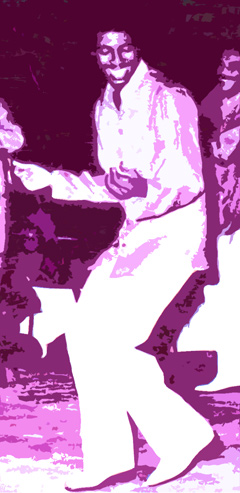Indice - Table of contents
Lo Nuevo[hide]
Grupos: Ritmo Oriental : 1988 - Vol. IX - 30 a...
Musicos: Rafael Paseiro Monzón
Musicos: Dennis Nicles Cobas
Musicos: Jiovanni Cofiño Sánchez
Musicos: Yasser Morejón Pino
Fotos: Tom Ehrlich : 2024 Monterey Jazz, P...
Resenas: Vacilón Santiaguero (Circle 9 ...
Staff: Bill Tilford
Fotos: Tom Ehrlich : 2024 Monterey Jazz, P...
Fotos: Tom Ehrlich : 2024 Monterey Jazz Fe...
Fotos: Tom Ehrlich : testing 123
Grupos: Pupy y los que S... : Discography - 1995- F...
Reportes: From The St... : Cubadisco 2...
Reportes: From The St... : Jazz Plaza ...
Fotos Del Día [hide]
The Music of Ritmo Oriental - The 1980s
Ritmo Oriental's young violinist David Calzado was paying more than passing attention as the band worked out the stage show for their new single Cuidao con la percusión. It was an inspired routine -- you might have even called it an espectáculo -- with gaudy costumes and elaborate dance choreography with the singers mimicking the percussion bloques [source]. In addition to all the fireworks, Tony Calá's songwriting and singing are exquisite - it's hard to believe he stopped writing after joinng NG
1982
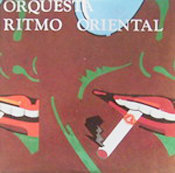 Ritmo Oriental -- In addition to becoming the main lead vocalist Tony Calá also wrote half of the songs on la Ritmo's 1983 album, El agua me llevó. In our first clip [source], Tony recounts a humorous story which could easily have turned tragic when the band was caught in a torrential storm and the musicians had to stand on top of the tour bus to keep from drowning. They lived to tell the tale and turned it into a great song, complete with sound effects and -- as always -- brilliant bloques and rhythm section playing. The string-writing (remember that Calá was also a great violinist) is also very creative on this album. Another violinist-arranger who participated in this album was David Calzado, who had come over from Revé (where else?). In addition to arranging Mi amigo Nicolás, Calzado was busilyy absorbing many influences - both rhythmic and choreographic - which he'd put to use 10 years later with Charanga Habanera. It's often said that CH modeled their stage show after Earth Wind & Fire, but if you watch early videos of la Ritmo, it's clear that much of his inspiration came from influences that were much closer to home.
Ritmo Oriental -- In addition to becoming the main lead vocalist Tony Calá also wrote half of the songs on la Ritmo's 1983 album, El agua me llevó. In our first clip [source], Tony recounts a humorous story which could easily have turned tragic when the band was caught in a torrential storm and the musicians had to stand on top of the tour bus to keep from drowning. They lived to tell the tale and turned it into a great song, complete with sound effects and -- as always -- brilliant bloques and rhythm section playing. The string-writing (remember that Calá was also a great violinist) is also very creative on this album. Another violinist-arranger who participated in this album was David Calzado, who had come over from Revé (where else?). In addition to arranging Mi amigo Nicolás, Calzado was busilyy absorbing many influences - both rhythmic and choreographic - which he'd put to use 10 years later with Charanga Habanera. It's often said that CH modeled their stage show after Earth Wind & Fire, but if you watch early videos of la Ritmo, it's clear that much of his inspiration came from influences that were much closer to home.
The song that was performed most live was another Calá composition, Barrios de los rumberos. Clocking in at over 6 minutes, it goes goes through many changes -- starting with a beautiful cuerpo set against a guaguancó and then transitioning in a very unique way to the first coro [excerpt 1 - source]. The energy keeps building into the first coro [source], during which Tony quotes la Ritmo's first big hit, Sabroseao con la Ritmo, and with the second coro, the violins take up a guajeo that launches the track into a transcendental groove ... none of the people we've found who were lucky enough to hear this song live came away from the experience unchanged!
Last but not least we come to yet another Calá composition, Conmigo candela brava. The introduction [source] juxtaposes a funky shuffle bassline with its folkloric ancestor. The 12/8 groove returns after the first coro. The second coro is an early example of the technique of two overlapping coros, later put to great use in the timba era.
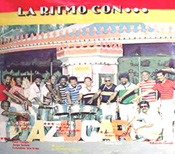 Ritmo Oriental, a Havana band in spite of its name, finally made it to el oriente to record its first album on Siboney, El baile del azúcar -- the original source of the fam
ous a la derecha, a la izquierda [source for all] coro that was later requisitioned by NG La Banda, Charanga Habanera, and just about everyone else. What many people don't realize is that there's a lot more to El baile del azúcar than that catchy coro. It's also one of the best examples of Tony Calá's songwriting abilities.
Ritmo Oriental, a Havana band in spite of its name, finally made it to el oriente to record its first album on Siboney, El baile del azúcar -- the original source of the fam
ous a la derecha, a la izquierda [source for all] coro that was later requisitioned by NG La Banda, Charanga Habanera, and just about everyone else. What many people don't realize is that there's a lot more to El baile del azúcar than that catchy coro. It's also one of the best examples of Tony Calá's songwriting abilities.
Another great Calá composition is Advertencia para todos. The mix on this album is a revelation as we can finally clearly hear the great drummer Daniel Díaz. Our second excerpt looks forward to the timba era as it shifts in and out of percussion breakdowns, only to dramatically return to the original roots of Ritmo Oriental and all the charanga orquestas ... the danzón.
While in "el Oriente", la Ritmo picked up two more songs from the Santiago-based composer Rodulfo Vaillant, who had already given them Quién dice and Por hacerme caso. Ana margarita was la Ritmo's entry into the merengue-based fad of the mid-80s and Más no cabe is a little-known gem combining the rhythmic fire of their earlier work with some very imaginative harmonies and managing to pull off the hat trick of quoting -- in the same 4-clave phrase, Jobim's One Note Samba, their own El que no sabe, sabe, and Duke Ellington's It Don't Mean a Thing if it Ain't Got That Swing.
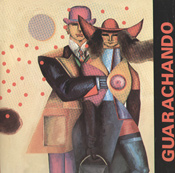 Ritmo Oriental -- Guarachando was la Ritmo's last album with Tony Calá and it was a powerful finale.
Ritmo Oriental -- Guarachando was la Ritmo's last album with Tony Calá and it was a powerful finale.
The first track, Azúcar a granel, is a work of art. Not a note is wasted. Every phrase of Humberto Perera's strikingly original arrangement seems to lead inevitably to the next.
The opening passage [source for all] foreshadows timba in several important ways. As would become common in the 90s, the arrangement begins with a preview of the montuno section, and a particularly clever one that introduces the theme of the montuno in a different key in order to accommodate one of la Ritmo's most complex harmonic structures. The instruments enter one by one with the type of rhythmic ambiguity that would become the calling card of Charanga Habanera years later. The bass tumbao is silent on the first beat of the phrase, but since it enters completely alone it sounds like pickups into the downbeat of the 2-side, setting the stage for a startling denouement when the piano entrance reveals that we're really in 3-2.
0xx0 xxx0 xx0x 0xxx 3-2 rumba clave
xxx0 0x0x 0x0x 0x0x bass tumbao
xxxx xxxx xxxx xxx0 piano enters on anticipation
x000 0000 x000 0000
x000 0000 0000 0000 piano tumbao
Because the bass is always silent on the first beat, and rhythmically divorced from the piano, the left hand of the piano becomes a de facto second bassline, creating the unusual and effective progression, in the key of F:
An unusual sequence of voicings brings us to a beautiful cuerpo worthy of Jobim or Piloto, and then, just as we seem to be settling into coro 1, still in F, we get this unusual sequence of voicings! It sounds like something out of a Yellowjackets or Weather Report song, but this is no heavy-handed attempt at "fusion" - listen to how seamlessly and naturally it fits into the context of the arrangement, bringing us back to the striking opening tumbao, now in the key of C.
In our search for the roots of timba, Tony Calá's singing and songwriting in this period is an absolute revelation. These songs clearly had a huge influence on the material El Tosco wrote for him to sing in the early 90s, andit's equally clear that many aspects of Tony's style with NG had already been perfected before he joined the group. Listen to this sublimely perfect guía for example.
The second montuno of Azúcar a granel is quite different and in live performance was often extended for several minutes or longer. This was another important innovation in which Ritmo Oriental had a central role -- the idea of multiple montuno sections with different tumbaos and chord progressions. The early genres of son and danzón involved adding clave rhythms to European songforms and instrumental dance music. Later, the arrangements were expanded to add the African idea of call and response vocals. When these sections became longer and were combined with repeating horn figures, the genres became son-montuno and danzón-mambo, respectively. Now, in the 80s, we start to encounter forms that could be described as son-montuno 1-montuno 2, and by the time we reach the late 90s we'll sometimes find three different montuno sections -- each with unique piano and bass tumbaos, and each with multiple coros and mambos.
The second track, Bailadores, is a brilliant Perera arrangement of a song by Buena Vista Social Club figure Remberto Bécquer, who was already in his 70s at that point. Tony Calá is in his absolute prime in a coro section that creates so much rhythmic tension that it finally has to resolve into a folkloric groove. Next comes a conga solo from Juan Claro Bravo against a motivo figure, followed by a Polo Tamayo flute solo played over what could be thought of as the "title coro", "sé que tú quieres guarachar, yo sé que tú quieres guarachar". The same coro returns on the last track, Baila, si vas a bailar.
Before leaving Bailadores we should mention the "mystery version" that made it into Victor Barrientos' hands on an old cassette. The audio is distorted, but the performance is longer and more adrenaline charged, varying most from the released version in the final sections [write EGREM]. And before arriving at the grand finale, we should also mention Por eso voy a dejarlo -- a Cuban anti-smoking song! You have to visit there to fully appreciate the irony. It was apparently mandated by the government when Fidel himself was kicking the habit.
Baila si vas a bailar starts with a very clever paraphrase of Beny Moré's Elige tú [source], which timba fans will recognize from Michel Maza's version [source]. The song says, basically, "you choose - I can sing anything", but Tony sings it from a dancer's perspective, changing the words accordingly.
The track is packed with highlights, including a rare drum solo from the great Daniel Díaz and the afore-mentioned reference to the "guarachar" coro, but the pièce de resistance is the last montuno section -- with Tony soaring over one of the band's most euphoric grooves, leading up to perhaps the most beautiful and audicious example of "clave license" in Cuban music. In midst of a throbbing 2-3 tumbao, Tony sings "para bailar el son, son, son, son, son". The band stops on a dime and makes a bloque out of "son son son son son". The rhythm? 3-2 rumba clave! After laying out for the space of one more clave, they re-enter in 2-3. During the intervening silence, Tony sings "la clave se lleva en el corazón" ("the clave is carried in the heart"). There could no more poetic way to explain, demonstrate, and vindicate "clave license", and to make it even more perfect, it's almost certain that the band was completely oblivious to any of this. They just played it like they heard it and it was so great that they repeated it at the end of the track, which was also the end of the album, and, as the reverbation of the closing bloque fades away like the coda of a symphony, we come to the end of the second great era of la Ritmo Oriental. When Tony Calá recorded again, it would be with NG La Banda.
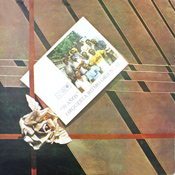 Ritmo Oriental:30 años
Ritmo Oriental:30 años
Tony Calá wrote what may have been his last song to commemorate la Ritmo's 30th anniversary -- 30 años [source] -- but he'd moved on to NG La Banda by the time it was actually recorded, so the vocal chores were inherited by Juan Crespo Maza. Maza also contributed three originals, including Azúcar con chocolate [write EGREM].
There are also two songs by Original de Manzanillo composer Cándido Fabré. Qué tiene la Ritmo [write EGREM] may been a source of inspiration for the lyrics of Los Van Van's Qué tiene Van Van and NG La Banda used the same general melodic phrasing on several songs, including Ya llegó la hora [source]. Fabré also wrote Pasen señores pasen [write EGREM] which has some of the album's best bloques.
Finally, there's a ten-minute Popurrí de éxitos giving us glimpse into the mind of arranger Enrique Lazaga as he embarked on the impossible task of narrowing la Ritmo's greatest hits to a mere 8. It's a painful process, but it's hard to argue with his choices.
Yo bailo de todo
Mi socio Manolo
Ahora sí
Matrimonio Feliz
Y se baila así
Nena, así no se vale
El agua no me llevó
Baile del azúcar -- [excerpt 2]
[sources]
To get a sense of the towering greatness of this band, here are 13 equally worthy masterpieces which didn't make it into the popurrí:
La Ritmo suena a Areíto
La Ritmo te está llamando
Qué rico bailo yo
La chica mamey
Al que le tocó le tocó
El son de Claro
Con el chenche buchenche
Maritza
Bailadores
Barrios de los rumberos
Cuida'o con la percusión
Azúcar a granel -- [excerpt 2]
Baila si vas a bailar
[sources]
The list could go on and on. Ritmo Oriental rode the crest of the elusive wave of pop music inspiration for over 15 years without interruption, a feat that few have accomplished in any genre.















